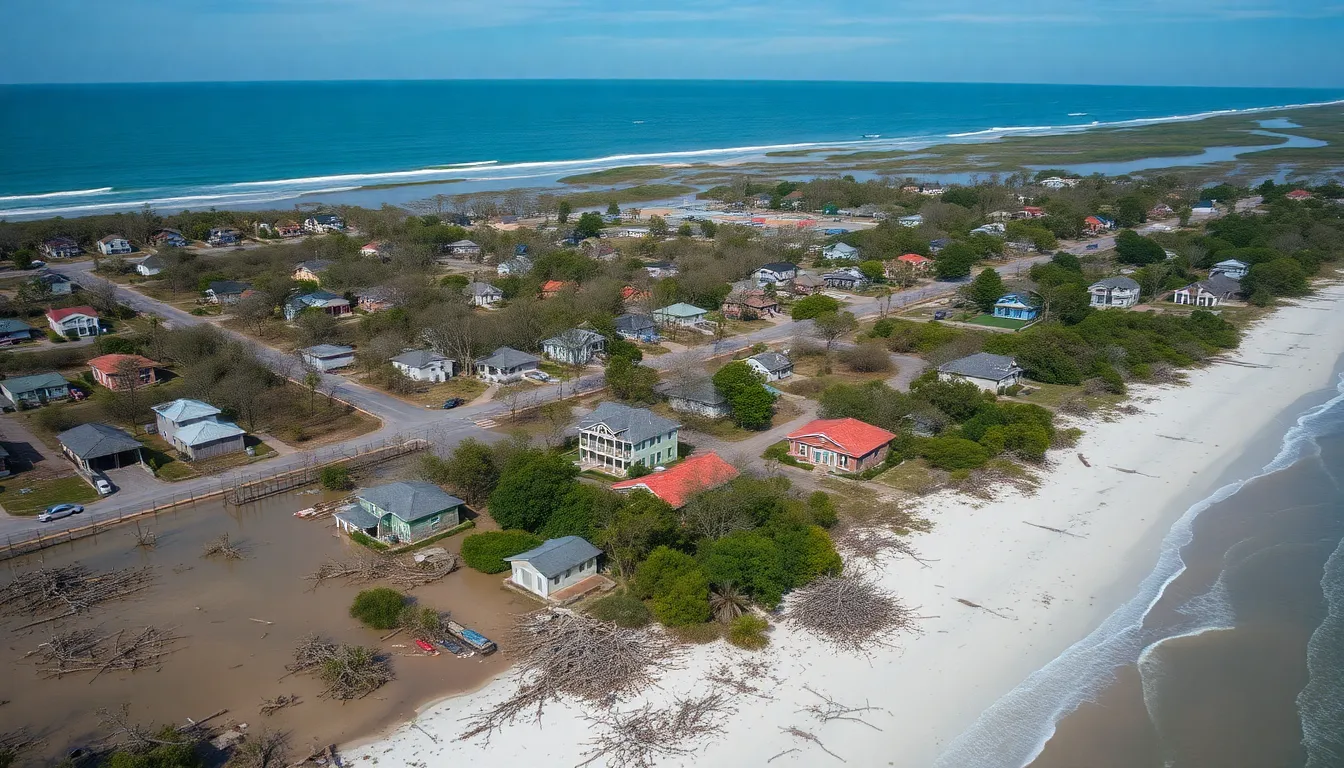St. George Island, a picturesque barrier island off Florida’s Gulf Coast, faced the fierce wrath of Hurricane Helene in September 2000. This storm not only tested the island’s resilience but also left a lasting impact on its community and environment. As winds howled and waves crashed, residents braced themselves for the unpredictable nature of hurricanes.
Understanding the events surrounding Hurricane Helene is crucial for both locals and visitors. It highlights the importance of preparedness and the ongoing efforts to safeguard this beautiful coastal haven. From the storm’s formation to its aftermath, the story of Hurricane Helene serves as a reminder of nature’s power and the strength of the community in the face of adversity.
Table of Contents
ToggleOverview of St George Island
St. George Island is a barrier island located off the coast of Florida, well-known for its natural beauty and tranquil atmosphere. The island spans approximately 28 miles in length and features a mix of pristine beaches, salt marshes, and vibrant ecosystems. The island is part of the St. George Island State Park, which offers various recreational activities such as fishing, hiking, and birdwatching.
Residents and visitors enjoy the island’s quiet charm, with a small population that fosters a close-knit community. The primary settlement, Eastpoint, connects directly to the island and provides essential services and amenities. Tourism plays a significant role in the local economy, with vacation rentals, small shops, and restaurants catering to visitors year-round.
St. George Island’s geography makes it vulnerable to hurricanes. The island’s low elevation and proximity to the Gulf of Mexico mean that it’s susceptible to storm surges during tropical weather events. This vulnerability underscores the importance of hurricane preparedness for the residents. Following Hurricane Helene, the community initiated efforts to enhance their resilience against future storms, demonstrating their commitment to safeguarding their home and environment.
St. George Island embodies both natural beauty and community spirit, making it a unique destination while constantly adapting to the challenges posed by hurricanes.
Impact of Hurricane Helene

Hurricane Helene struck St. George Island in September 2000, leaving significant impacts on the community and environment. The storm served as a critical reminder of the island’s vulnerability to severe weather events.
Timeline of Events
- September 9, 2000: Hurricane Helene formed in the Gulf of Mexico, exhibiting rapid intensification.
- September 14, 2000: The storm made landfall near St. George Island, bringing sustained winds of 100 mph.
- September 15-16, 2000: Heavy rain and storm surge led to widespread flooding and damage throughout the island.
- September 17, 2000: Emergency response teams began assessing the damage and providing assistance to residents.
Areas Affected
- Eastpoint: Sustained extensive wind damage, with residential structures impacted and power outages affecting residents for days.
- State Park: Flooding inundated trails and eroded shorelines, significantly disrupting the local ecosystem.
- Residential Areas: Many homes in low-lying regions experienced flooding, prompting evacuations and emergency rescues.
- Commercial Zones: Businesses faced loss due to structural damage and halted tourism, affecting the local economy.
The aftermath of Hurricane Helene highlighted the need for ongoing preparedness efforts and community resilience strategies.
Recovery Efforts
Recovery efforts following Hurricane Helene significantly involved community participation and government support, allowing St. George Island to rebuild and improve its resilience against future storms. These efforts highlight the determination and strength of the island’s residents.
Community Response
Community members quickly mobilized to address immediate needs after Hurricane Helene struck. Local volunteers organized teams for debris removal and property assessments, ensuring safety and restoration. Residents established a donation center, collecting food, water, and essential supplies for affected families. Community gathering spaces served as hubs for information and coordination, allowing residents to share resources and support one another.
Government Assistance
Government entities provided crucial aid to St. George Island during recovery. Emergency relief funds allocated by the Federal Emergency Management Agency (FEMA) supported immediate response actions, including housing assistance and infrastructure repairs. State agencies coordinated with local officials to ensure effective resource distribution and emergency service availability. Programs aimed at rebuilding homes and improving the island’s overall storm preparedness emerged as a focus to mitigate future disaster impacts.
Long-Term Effects
Hurricane Helene’s impact on St. George Island extended beyond immediate damage, influencing the community and environment for years. Recovery efforts prioritized resilience, leading to enhanced infrastructure that better withstands future hurricanes.
Economic Challenges
Economic recovery proved difficult as many local businesses faced significant financial losses. Tourism, a vital part of the economy, saw prolonged declines due to perceived risks associated with hurricanes. Recovering tourist interest involved promotional campaigns highlighting the island’s natural attractions and restored amenities.
Environmental Changes
Environmental shifts included alterations to coastal ecosystems and habitats. Restoration projects focused on addressing storm damage to local flora and fauna and preserving the island’s biodiversity. Efforts included replanting native vegetation and reinforcing dunes to combat erosion.
Community Strengthening
Community ties strengthened, resulting in more organized disaster preparedness initiatives. Residents established better communication channels and emergency response plans to facilitate quick mobilization during future storms.
Policy Improvements
Policy changes followed the storm, incorporating stricter building codes and land-use regulations. These measures aimed to ensure safer construction practices for residential and commercial properties, reducing vulnerability to flooding and wind damage.
Awareness and Education
Heightened awareness regarding hurricane preparedness emerged throughout the community. Educational programs, workshops, and simulations engaged residents in understanding risk factors and effective responses, aiming to minimize possible disruptions during storms.
These long-term effects illustrate the enduring impact of Hurricane Helene, shaping how St. George Island engages with its unique environment and community resilience strategies.
Hurricane Helene’s impact on St. George Island serves as a powerful reminder of nature’s unpredictability and the resilience of communities in the face of adversity. The island’s recovery efforts highlighted the strength of its close-knit population and their commitment to rebuilding. As they continue to enhance their preparedness for future storms, the lessons learned from Helene will shape their approach to disaster management and community engagement. St. George Island remains a beautiful destination, with its vibrant ecosystems and rich cultural heritage, drawing visitors even as it strengthens its defenses against potential hurricanes. The ongoing focus on resilience ensures that the island will not only recover but thrive in the years to come.


